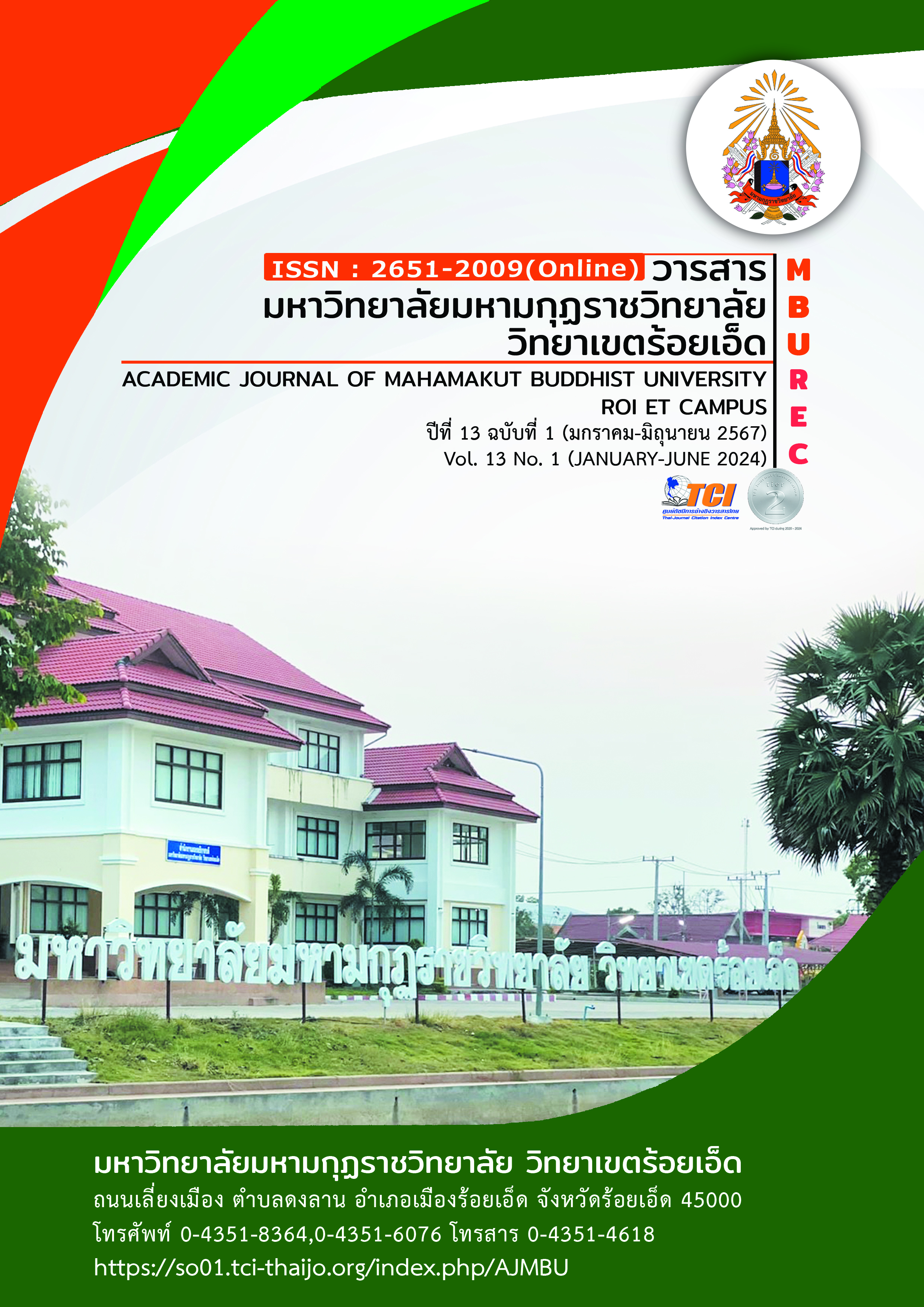THE MANAGEMENT OF COMMUNITY CAPITAL TO UPGRADE AREA BASED DEVELOPMENT IN KOSUMPISAI DISTRICT, MAHASARAKHAM PROVINCE
Main Article Content
Abstract
The objectives of this research 1) to analyze the characteristics of community capital in terms of economy and community economic development 2) To study the community capital management model and community economic development 3) To present the model of community capital management and community economic development in Kosum Phisai, District Maha Sarakarm Province. The research method was integrated research. The sample size of quantitative research consisted of 236 people from member of the community fund groups and the key informants for qualitative research were community leaders and community fund members who have experience in community activities or those working on the project activities to promote community economic development consisted of 18 persons. The research instruments were questionnaire and semi-structured interview. The quantitative research data analysis used descriptive analysis and qualitative research data analysis used inductive method and classified and grouped the data according to the research objectives, presenting the results of descriptive data analysis to find the findings
The results showed that 1. Economic community funds consist of Village funds, Production Saving Funds, and the Integrated Agricultural Community Enterprise Funds. The characteristic of the funds has many objectives for the community development which aim to have a stable income, have a supplementary occupation, have funds to lend in the community, and have a self-sufficient livelihood. Each fund has an important activity that is for members to save money. borrowing money and holding shares. There is a gathering to form professional groups, produce the productivity, marketing management. In each community a member can participate in various groups other than financial groups. The origin of the funds was both form the villagers think about themselves and those that were established by government agencies. The distinctive feature of the fund is the establishment of Community Fund Management Centers for each community to make members unity, working together continuously, and have a network. The inferior characteristics include the lack of a community database and the lack of a strong community plan. 2. Models of community fund management and community economic development, consisting of: 1. economic fund group management by the fund management committee 2) continuous assessment of management potential 3) there are rules governing the relationship of people with people and people with work within the fund group 3. A new model of community capital management, consisting of 1) knowledge-based development, 2) systematic community capital management, and 3) holistic community economic system development.
Article Details

This work is licensed under a Creative Commons Attribution-NonCommercial-NoDerivatives 4.0 International License.
References
กรมการพัฒนาชุมชน. (2551). กระบวนการดำเนินงานวิสาหกิจชุมชนของสำนักงานส่งเสริมวิสาหกิจ. สืบค้นเมื่อ 14 มีนาคม 2565. จาก http://www.fda.mopa.go.th
กระทรวงพาณิชย์. กรมการค้าภายใน. (2559). คู่มือการดำเนินงาน โครงการตลาดชุมชนเพื่อธุรกิจ ท้องถิ่น “ตลาดต้องชม”. กรุงเทพมหานคร : กระทรวงพาณิชย์.
กาญจนา แก้วเทพ และกนกศักดิ์ แก้วเทพ. (2530). การพึ่งตนเอง: ศักยภาพในการพัฒนาชนบท. กรุงเทพมหานคร : สภาแคทอลิกแห่งประเทศไทยเพื่อการพัฒนา.
กาหลง กลิ่นจันทร์ และคณะ. (2560). แนวทางการบริหารจัดการทุนชุมชน กรณีพื้นที่ตรัง. กรุงเทพมหานคร : คณะวิทยาการจัดการ มหาวิทยาลัยสวนดุสิต.
โกวิทย์ พวงงาม. (2553). การจัดการตนเองของชุมชนและท้องถิ่น. กรุงเทพมหานคร : บพิธการพิมพ์.
คนึงนิจ ศรีบัวเอี่ยม และคณะ. (2545). แนวทางการเสริมสร้างประชาธิปไตยแบบมีส่วนร่วมตารัฐธรรมนูญแห่งราชอาณาจักรไทย พ.ศ.2540: ปัญหา อุปสรรค และทางออก. กรุงเทพมหานคร : สถาบันพระปกเกล้า.
ชมนาด แก้วนิมิต. (2542). บทบาทผู้นำชุมชนในการพัฒนาเศรษฐกิจชุมชน. ขอนแก่น : มหาวิทยาลัยขอนแก่น.
ณัฐพล ขันธไชย.(2537). แนวคิดและทฤษฎีในการพัฒนาประเทศ และการพัฒนาชนบทในการบริหารงานพัฒนาชนบท. กรุงเทพมหานคร : โอเดียนสโตร์.
ดิเรก ฤกษ์หร่าย. (2527). การพัฒนาชนบท. กรุงเทพมหานคร : กรุงสยามการพิมพ์.
ธเนศ ศรีวิชัยสัมพันธ์. (2552). เอกสารการสอนวิชาการพัฒนาเศรษฐกิจชุมชน. เชียงใหม่ : คณะเศรษฐศาสตร์ มหาวิทยาลัยเชียงใหม่.
นงลักษณ์ เทพสวัสดิ์. (2541). วิเคราะห์ปัญหาสำคัญในสังคมไทย. กรุงเทพมหานคร : สำนักพิมพ์มหาวิทยาลัยธรรมศาสตร์.
นภาภรณ์ หะวานนท์, และพิสมัย รัตนโรจน์สกุล.(2548). การเสริมสร้างทุนทางสังคมเพื่อชุมชนเข้มแข็ง. กรุงเทพมหานคร : สำนักงานคณะกรรมการพัฒนาการเศรษฐกิจและสังคมแห่งชาติ.
ประกอบ กรรณสูตร. (2542). สถิติเพื่อการวิจัยทางพฤติกรรมศาสตร์. พิมพ์ครั้งที่ 3. กรุงเทพมหานคร : สุทธาการพิมพ์.
ประเวศ วะสี. (2534). การสร้างสรรค์ภูมิปัญญาไทยเพื่อการพัฒนา. กรุงเทพมหานคร : สำนักงาน คณะกรรมการวัฒนธรรมแห่งชาติ.
วิชิต นันทสุวรรณ. (2547). ขบวนการชุมชนใหม่. กรุงเทพมหานคร : เจริญวิทย์การพิมพ์.
ศิรวิชญ์ สุประดิษฐ์. (2565). รูปแบบการดำเนินงานโดยใช้ทุนชุมชนเพื่อพัฒนาการท่องเที่ยวโดยชุมชนอย่างยั่งยืน. วิทยานิพนธ์ปรัชญาดุษฎีบัณฑิต. บัณฑิตวิทยาลัย : มหาวิทยาลัยศิลปากร.
สำนักงานจังหวัดมหาสารคาม. (2561). แผนพัฒนาจังหวัดมหาสารคาม พ.ศ. 2561 – 2565. มหาสารคาม : สำนักงานจังหวัดมหาสารคาม.


